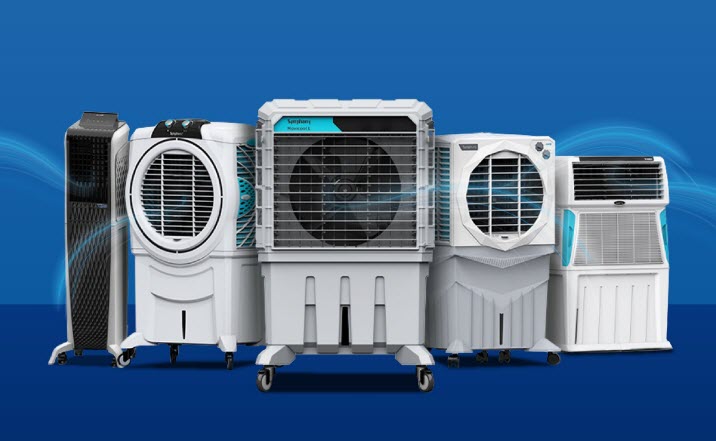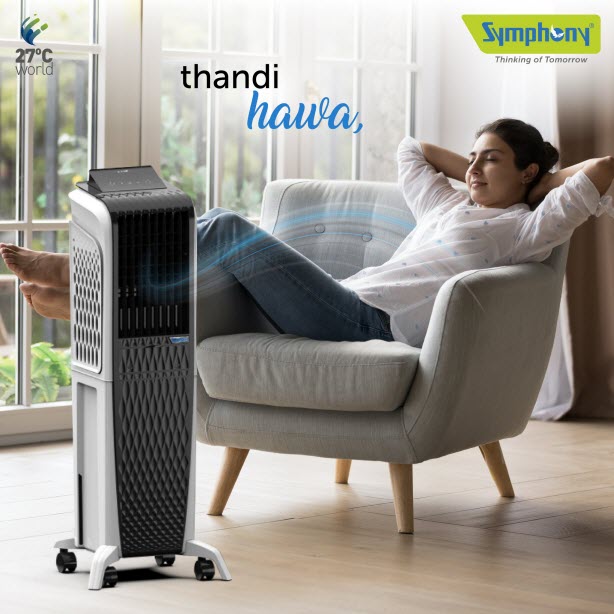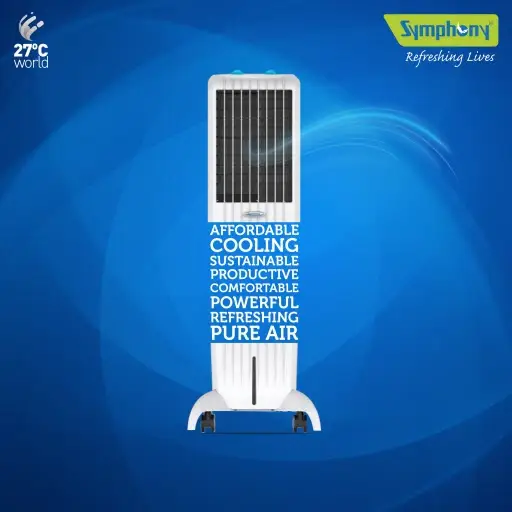Understanding the need for an effective air cooler
In today’s world, where rising temperatures have become increasingly common, the need for an effective air cooler has never been more apparent. Whether you’re seeking respite from scorching summer days or looking to create a more comfortable living environment, an efficient air cooler can make a world of difference. To truly harness the power of air cooling, it’s essential to delve into the science behind it. Understanding the intricate mechanisms and principles at play will not only help you make informed choices when selecting an air cooler but also enable you to optimize its performance, making your cooling experience more efficient and cost-effective. In this comprehensive guide, we will explore the various aspects of making your air cooler more effective, from choosing the right unit to implementing smart cooling strategies and eco-friendly practices.
Choosing the Right Air Cooler
Selecting the right air cooler is the cornerstone of achieving optimal cooling efficiency. To embark on this journey, the first step is to assess your specific cooling needs. Factors such as room size, climate, and intended usage play pivotal roles in determining the type and capacity of air cooler that suits you best. Size and capacity considerations must be meticulously evaluated, ensuring that the unit is neither overpowered nor underpowered for the designated space. Energy efficiency ratings are equally paramount, enabling you to strike a balance between comfort and sustainability. Additionally, don’t overlook the noise levels and convenience factor, especially if the air cooler will be used in bedrooms or quieter spaces, as a quieter unit can significantly enhance the overall user experience.

Proper Placement of Air Cooler
The proper placement of your air cooler is pivotal in ensuring its effectiveness. To begin, it’s imperative to find the optimal location within your living space. This often involves positioning the cooler near the center of the room to facilitate even distribution of cool air. However, ensure that the unit is not obstructed by furniture or other obstacles that can impede airflow. Furthermore, avoiding direct sunlight is essential, as excessive heat can counteract the cooling effect. Placing your air cooler in a shaded area or drawing curtains during peak sun hours can make a significant difference. Adequate ventilation is another critical consideration, as it allows for the circulation of fresh air and the expulsion of warm, stale air. Lastly, be mindful to avoid placing the cooler near sources of heat or obstructions that may hinder the inflow and outflow of air, as these factors can greatly impact the cooler’s efficiency and performance. By paying careful attention to these placement guidelines, you can maximize the cooling potential of your air cooler and create a more comfortable living environment.
Maintaining Air Cooler Cleanliness
Ensuring the cleanliness of your air cooler is essential for its efficient and effective operation. Establishing regular cleaning routines is the first step in this maintenance process. Dust and debris can accumulate on cooling pads and filters over time, reducing their effectiveness. Thus, it’s vital to inspect and replace these components as needed to maintain optimal cooling performance. Additionally, preventing the growth of algae and mold within the unit is crucial. These unwanted organisms can not only compromise air quality but also impede the cooling process. Regularly cleaning the water tank and using appropriate cleaning solutions can help deter their development.
However, beyond these routine tasks, recognizing the importance of overall maintenance cannot be overstated. Regular maintenance goes beyond cleaning and includes inspecting the entire unit, checking for any signs of wear or malfunction, and addressing them promptly. By adhering to these maintenance practices, you not only ensure a longer lifespan for your air cooler but also guarantee that it continues to provide cool, clean, and refreshing air for your comfort.
Water Quality Matters
The quality of water used in your air cooler can significantly impact its performance and longevity. Understanding the importance of water quality is paramount. It’s crucial to use clean and pure water to ensure that the air cooler functions optimally. Preventing mineral buildup is a key consideration, as excessive minerals in the water can lead to clogs and reduced cooling efficiency. Using additives, such as water softeners or descaling agents, can help mitigate mineral buildup and prolong the life of your air cooler. Regularly checking and maintaining water levels in the tank is also essential. Insufficient water levels can cause the unit to run inefficiently or, in some cases, damage the pump. By paying attention to these water quality and maintenance aspects, you can ensure that your air cooler operates at its best, providing consistent and refreshing cool air.
Enhancing Airflow
Enhancing airflow is a key strategy in making your air cooler more effective. Here are some tips to achieve better air circulation and cooling:
- Creating cross-ventilation: Cross-ventilation involves strategically opening windows and doors to allow fresh, cool air to enter and warm, stale air to exit. This natural airflow can complement the cooling effect of your air cooler, especially during the cooler evening hours.
- Using natural wind to your advantage: When outdoor conditions are favorable, harness the power of natural wind. Place the air cooler near an open window or door to draw in the fresh outdoor breeze, enhancing the cooling effect without using excess energy.
By implementing these airflow-enhancing techniques, you can optimize the performance of your air cooler, ensuring a more comfortable and refreshing indoor environment while minimizing energy consumption.

Air Cooler Control and Settings
Effectively controlling and adjusting the settings of your air cooler is crucial to optimize its performance. Here’s a breakdown of key control and settings considerations:
- Understanding the control panel: Familiarize yourself with the control panel of your air cooler. It typically includes buttons or knobs for adjusting fan speed, cooling modes, and timer functions. Understanding the layout and functions is essential for efficient operation.
- Setting the right fan speed: Most air coolers offer multiple fan speed options. Choosing the appropriate fan speed depends on factors like room size and desired cooling intensity. Higher fan speeds provide more cooling but may also be noisier.
- Utilizing timer functions: Timer functions allow you to schedule when your air cooler operates. This feature is particularly useful for saving energy by running the cooler only when needed, such as during sleeping hours or specific times of the day.
- Remote control and smart features: Many modern air coolers come with remote controls or can be integrated into smart home systems. Remote control allows you to adjust settings conveniently from a distance, while smart features enable automation and voice control for added convenience.
Mastering these control and settings options ensures that you can fine-tune your air cooler’s operation to meet your specific comfort needs efficiently. Whether you prefer a quiet night’s sleep, energy-saving mode, or quick cooling during a hot day, understanding your air cooler’s controls empowers you to tailor your experience.
Maximizing Cooling Efficiency
To get the most out of your air cooler and maximize cooling efficiency, consider implementing the following strategies:
- Insulating your living space: Proper insulation is key to keeping your indoor environment cool. Ensure that your walls, windows, and doors are well-insulated to prevent heat from seeping in and cool air from escaping.
- Sealing gaps and cracks: Identify and seal any gaps, cracks, or openings in your home’s structure. These small openings can allow warm air to infiltrate and counteract the cooling effect of your air cooler.
- Using curtains and blinds effectively: Utilize curtains and blinds to your advantage. Keep them closed during the hottest part of the day to block out direct sunlight and heat. Open them in the evening to allow cool air to enter your living space.
- Creating shade outdoors: Consider planting trees, installing awnings, or using outdoor shades to create shade around your home. This reduces the amount of heat absorbed by your walls and roof, helping your air cooler work more efficiently.
- Installing ceiling fans: Ceiling fans complement the cooling effect of air coolers. They help distribute cool air evenly throughout the room and create a more comfortable environment. Running ceiling fans on a low setting can reduce the perceived temperature, allowing you to set your air cooler at a slightly higher temperature without sacrificing comfort.
By implementing these strategies, you can create a cooler, more comfortable living space while reducing the workload on your air cooler. This combination of tactics not only enhances cooling efficiency but also contributes to energy savings and a more sustainable cooling solution.
Seasonal Maintenance
Proper seasonal maintenance is essential to prolong the life of your air cooler and ensure it remains in good working condition. Here are the key steps to consider:
- Preparing your air cooler for winter storage: When the cooling season ends, it’s essential to prepare your air cooler for storage. Start by turning off and unplugging the unit. Drain any remaining water from the tank to prevent mold or bacterial growth during storage. Clean the cooling pads and filters thoroughly to remove dirt and contaminants. If possible, cover the unit to protect it from dust and debris.
- Off-season cleaning and maintenance: Periodically check your air cooler during the off-season to ensure it remains in good condition. Wipe down the exterior to remove dust and dirt. Inspect the unit for any signs of damage or wear and address any issues promptly. This maintenance ensures that your air cooler is ready for use when the next cooling season arrives.
- Storing water tanks properly: If you remove the water tank for storage, clean it thoroughly and ensure it is completely dry before storing it. Store the tank in a cool, dry place to prevent the growth of mold or bacteria. Consider covering it to keep it clean and protected.
- Avoiding freezing temperatures: Air coolers are not designed to operate in freezing temperatures. If you live in an area where temperatures drop below freezing during the winter, store your air cooler in a warm, dry location to prevent damage to the unit’s components. Freezing water inside the unit can cause structural damage and impact its performance.
By following these seasonal maintenance steps, you can extend the life of your air cooler and ensure it operates efficiently when you need it in the next cooling season. Proper care during the off-season helps you avoid potential issues and ensures that your air cooler continues to provide effective cooling when the hot weather returns.
Conclusion
In conclusion, understanding how to make your air cooler more effective is not merely a matter of comfort but also one of sustainability and environmental responsibility. The importance of optimizing your air cooler lies in its potential to provide efficient cooling while minimizing energy consumption, reducing your carbon footprint, and saving on energy bills. By making small but thoughtful changes in your approach, from choosing the right unit and placement to implementing maintenance routines and enhancing airflow, you can experience significant differences in your indoor comfort.
These small changes can translate into big differences, not only in your personal well-being but also in the broader context of a more sustainable future. By selecting energy-efficient models, reducing unnecessary cooling, and using natural cooling strategies, you contribute to a more environmentally friendly approach to staying cool. This, in turn, helps mitigate the impact of climate change and promotes a healthier planet.
In essence, the journey to making your air cooler more effective extends beyond personal comfort-it aligns with the broader goal of achieving a more comfortable, sustainable, and responsible future for us all. By adopting these practices, you not only enhance your immediate living conditions but also play a part in safeguarding the planet for future generations.
